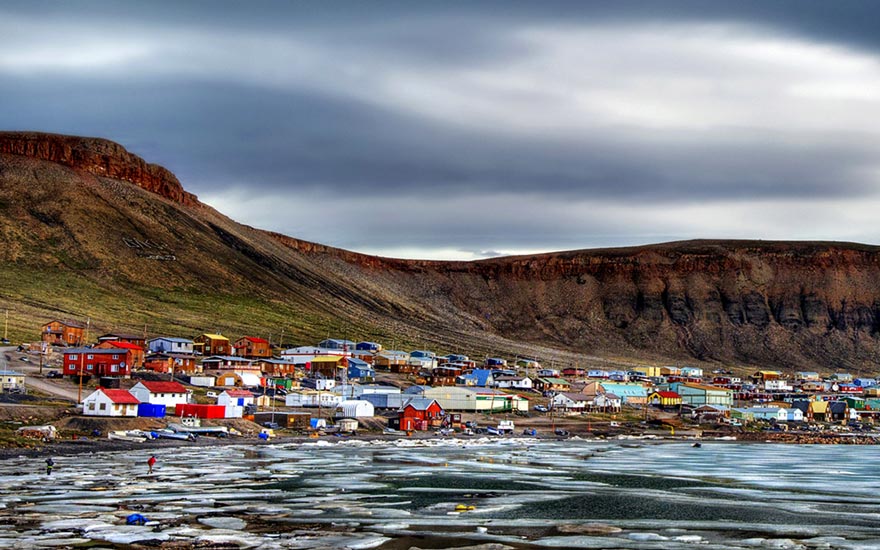The Canadian Arctic: Exploring the Untamed Beauty of Nunavut’s Frozen Wilderness

Encompassing vast expanses of ice, snow, and tundra, the Canadian Arctic is a region of unparalleled natural beauty and ecological significance. Within this frozen wilderness lies Nunavut, Canada’s northernmost territory, where ancient glaciers, towering mountains, and pristine fjords create a landscape that is both breathtaking and remote. From its rich Inuit culture and traditions to its unique wildlife and extreme climate, the Canadian Arctic offers a journey into the heart of one of the world’s last true wilderness areas.
A Land of Ice and Snow
Nunavut’s Arctic landscape is defined by its icy terrain, where glaciers carve their way through rugged mountains and frozen rivers wind their way across the tundra. The region’s polar climate brings long, harsh winters and brief, cool summers, shaping the land and the lives of those who call it home.
Visitors to the Canadian Arctic can experience the magic of this frozen landscape firsthand, whether exploring the towering icebergs of the Northwest Passage, trekking across vast icefields, or witnessing the mesmerizing display of the Northern Lights dancing across the night sky.
Inuit Culture and Traditions
At the heart of Nunavut lies a vibrant and resilient Inuit culture that has thrived in this harsh environment for thousands of years. The Inuit people have deep connections to the land and the sea, relying on traditional hunting, fishing, and trapping practices to sustain their way of life.
Visitors to the Canadian Arctic have the opportunity to immerse themselves in Inuit culture through cultural tours, art exhibits, and community events. From drum dances and throat singing performances to traditional feasts featuring local delicacies like Arctic char and caribou, there are countless opportunities to learn about the rich heritage and traditions of Nunavut’s Indigenous peoples.
Wildlife Wonders
Despite its harsh climate, the Canadian Arctic is home to a surprising array of wildlife, adapted to survive in one of the world’s most extreme environments. Polar bears, Arctic foxes, and Arctic wolves roam the icy expanses, while beluga whales, narwhals, and bowhead whales ply the frigid waters of the Arctic Ocean.
For wildlife enthusiasts, the Canadian Arctic offers unparalleled opportunities for wildlife viewing and photography. Expeditions to remote wilderness areas, such as Auyuittuq National Park and Sirmilik National Park, provide the chance to encounter these majestic creatures in their natural habitat and witness the delicate balance of life in the Arctic ecosystem.
Environmental Challenges
Despite its pristine beauty, the Canadian Arctic faces numerous environmental challenges, including climate change, habitat loss, and pollution. The region’s fragile ecosystems are particularly vulnerable to the impacts of a warming climate, with melting ice caps, shrinking permafrost, and changing migration patterns threatening the livelihoods of both humans and wildlife.
Efforts are underway to address these challenges through conservation initiatives, sustainable development practices, and community-based stewardship programs. By working together to protect and preserve the Arctic’s natural heritage, we can ensure that future generations will be able to experience the wonder and beauty of this unique and fragile ecosystem.
Conclusion
The Canadian Arctic is a place of unparalleled beauty, adventure, and cultural richness, where ancient landscapes and traditions come together to create a truly unforgettable experience. Whether trekking across frozen tundra, encountering polar bears on an ice floe, or sharing stories with Inuit elders around a campfire, the Arctic offers a journey into the heart of one of the world’s last great wilderness areas.
As visitors to the Canadian Arctic, it is our responsibility to respect and preserve this fragile ecosystem for future generations to enjoy. By embracing sustainable practices, supporting Indigenous communities, and advocating for the protection of the Arctic’s natural heritage, we can ensure that this frozen wilderness remains a source of wonder and inspiration for generations to come.




